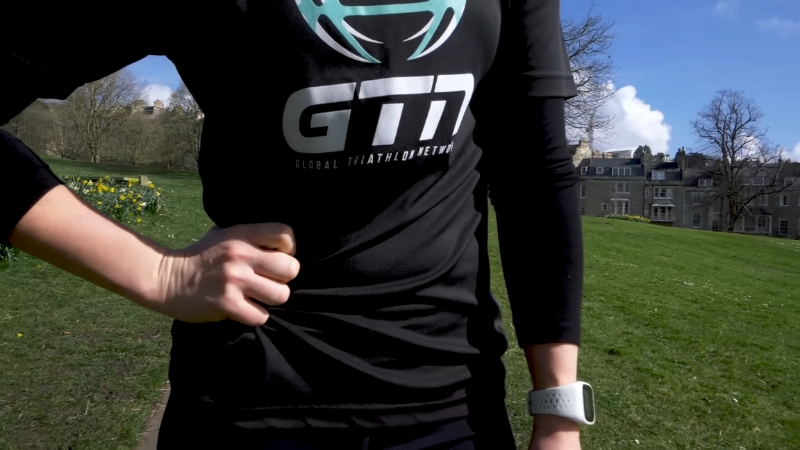Feeling nauseous, bloated, or crampy after a workout is far more common than most people realize.
Studies show that up to 50% of endurance athletes experience some kind of gastrointestinal (GI) distress during or after exercise. Even casual gym-goers can experience nausea or stomach pain after intense activity.
The most common reason? When you exercise, your body diverts blood flow away from your digestive organs to power your muscles, lungs, and heart.
This reduced circulation, called splanchnic hypoperfusion, slows digestion and can irritate the stomach or intestines. Combine that with factors like dehydration, meal timing, and physical stress, and your gut can easily rebel after a tough session.
What Happens to Digestion During Exercise
During physical activity, your body enters a “fight or flight” state. The sympathetic nervous system takes over, redirecting blood to the working muscles and away from the stomach and intestines. This can reduce digestive blood flow by as much as 80% during intense exercise.
With less oxygen and blood supply, the stomach and intestines struggle to digest food properly. That’s why heavy meals before workouts often lead to discomfort, nausea, or cramps.
Add bouncing or twisting motions, like running or HIIT, and the problem gets amplified.
At the same time, stress hormones such as cortisol and adrenaline increase gut sensitivity and reduce motility, making your stomach feel uneasy or inflamed.
Common Reasons for Stomach Upset After Exercise
There’s no single cause, but rather a combination of factors that can disrupt digestion during or after your workout.
Cause
What Happens
Typical Symptoms
What the Research Says
Reduced blood flow to the gut
Blood is redirected from the stomach to working muscles
Cramping, nausea, delayed digestion
Common during endurance or high-intensity exercise (Peters, 2001)
Mechanical movement / “jostling”
Repeated bouncing irritates the stomach and intestines
Stomach pain, urge to defecate
Especially common in runners (“runner’s trots”)
Exercise-induced acid reflux
Increased abdominal pressure pushes acid upward
Burning in the chest or throat, sour taste
Common in cyclists and strength trainers (Kaufman et al., 2022)
Dehydration
Loss of water and electrolytes through sweat
Nausea, cramps, GI spasms
Even 2% dehydration can slow digestion (Maughan, 2010)
Poor meal timing
Exercising soon after eating a heavy or fatty meal
Bloating, side stitches, vomiting
Avoid large meals within 2–3 hours before activity
Low blood sugar (hypoglycemia)
Glucose levels drop too low during exertion
Dizziness, nausea, upset stomach
Happens if you skip meals or overtrain (Brooks et al., 2015)
Overhydration/electrolyte imbalance
Excess water dilutes sodium in the blood
Bloating, nausea, confusion
Known as exercise-associated hyponatremia (Hew-Butler, 2017)
Anxiety or performance stress
Stress hormones trigger GI sensitivity
Butterflies, cramping, nausea
Gut-brain axis strongly linked to anxiety levels
The “Side Stitch”, Exercise-Related Transient Abdominal Pain (ETAP)
View this post on Instagram
If you’ve ever felt a sharp pain under your ribs while running or swimming, that’s a side stitch, or ETAP. It’s caused by irritation of the diaphragm or ligaments connecting abdominal organs to the diaphragm (Morton & Callister, 2015, Sports Medicine).
Why does it happen?
- Eating or drinking sugary fluids too close to exercise
- Poor breathing technique (shallow breaths)
- Weak core muscles
How to ease it:
- Slow down and focus on deep, rhythmic breathing
- Exhale when your opposite foot strikes the ground
- Strengthen your diaphragm with breathing exercises
Acid Reflux and Heartburn During Workouts
Intense exercise, especially anything involving bending, crunching, or pressure on the abdomen, can push stomach acid upward into the esophagus.
Cyclists and weightlifters often experience heartburn or a burning sensation in the throat post-exercise.
Triggers include:
- Large pre-workout meals
- Coffee or acidic drinks before training
- Tight clothing around the waist
- High-intensity or inverted positions (planks, crunches, yoga poses)
How to help:
- Wait at least 2–3 hours after eating before training
- Avoid acidic, spicy, or fatty foods pre-workout
- Choose upright exercises until symptoms improve
Dehydration and Electrolyte Loss

When you sweat, you lose water and electrolytes like sodium and potassium, both essential for muscle and nerve function. Dehydration slows down digestion and increases nausea and abdominal cramps.
In one study from the Journal of Applied Physiology, athletes who lost more than 2% of body weight through sweat had significantly higher rates of GI distress compared to those who stayed hydrated.
To prevent it:
- Drink steadily throughout the day, not just during workouts
- Use electrolyte solutions (not just plain water) for long sessions
- Rehydrate with fluids that contain sodium, potassium, and glucose
The Role of Food and Timing
What you eat, and when you eat, matters.
High-fiber, fatty, or spicy foods can linger in the stomach, leading to bloating or cramping when exercise begins. Large meals take longer to digest, while sugary drinks may trigger “dumping syndrome,” where food moves too quickly through the gut.
Best pre-workout meal guidelines:
- Eat 2–3 hours before exercise for large meals
- Eat 30–60 minutes before for small snacks
- Choose foods that are low in fat and fiber, such as bananas, oatmeal, or toast with honey
- Avoid carbonated drinks and artificial sweeteners
When It’s More Than Just a Stomach Ache

While most exercise-related stomach issues are benign, persistent or severe symptoms can point to underlying medical problems. If you notice any of the following, consult a doctor or sports medicine specialist:
- Stomach pain that lasts more than a few hours
- Blood in your stool or vomit
- Severe or chronic diarrhea after workouts
- Unexplained weight loss or fatigue
- Pain that occurs even at rest
Rarely, exercise-induced gastrointestinal ischemia (temporary loss of blood flow to the intestines) can occur in high-performance athletes. This requires medical evaluation (Peters, 2001).
Final Thoughts
@nikiolo1 #unistudent #gymgirly #pilates #running #medstudent #sportsdoctor #sportsdr #gym #runnergirl ♬ Pop beat BGM / long version(1283324) – nightbird_bgm
A post-workout upset stomach doesn’t necessarily mean something is wrong; it’s your body’s way of signaling that your digestive system is under stress. Between the shift in blood flow, hormonal changes, hydration levels, and physical movement, your gut simply needs time and balance to recover.
Some athletes also notice temporary bad breath from the stomach after intense exercise due to acid reflux or slowed digestion, which often resolves once the gut settles.
The key to preventing it is understanding your own triggers, what, when, and how you eat and drink, and adjusting your workouts accordingly.
If the problem persists despite these changes, a sports physician or gastroenterologist can help identify deeper issues like reflux disease, food sensitivities, or ischemic colitis in athletes.

